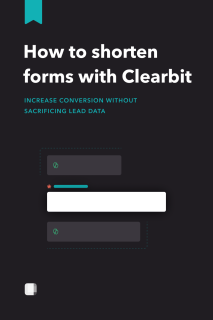Chapter 1
2 minutes
Increase conversions without sacrificing lead data
You already know that long forms hurt conversion. Not only that — people fill in fake information to get through required fields, and you can’t really blame them. It’s a terrible user experience to be forced through an investigative obstacle course before you can get to some content or talk to sales, as if you were trying to get into some secret hideaway or speakeasy. Let me in, the password is that I work with 150 other people at a SaaS company in the U.S.!
So you already want shorter forms. Reducing the amount of friction and removing barriers means opening the door to more leads.
But you’re in the B2B biz. Your wish goes on the backburner, because reducing the number of fields would sacrifice the data you need to collect in order to understand, score, and route incoming leads. Without key data points about them, like company size, industry, country, and job title, sales teams can’t get to the best quality prospects ASAP to hit higher close rates and deal values. Marketing can’t shuttle people into the right nurture tracks and gets blamed for sending over bad leads.
That’s why so many of us are left putting up with long forms, despite our wishes. In 2015, Formstack found that the average number of fields for lead gen forms (to access webinars and gated content) was 11. More recently, in our own analysis of the most-trafficked B2B software sites, we found that the average number of fields for sales contact forms is 8. There are many ways marketers have tried to address this trade-off between lead quantity and lead quality, designing forms to look shorter with horizontal stacking, creating multistep screens to generate a feeling of progress, or collecting information over multiple form interactions with progressive profiling.
It turns out that you don’t have to make a tradeoff. You can get rid of longer forms that are costing you in customer experience and conversion rates.
Keep reading to learn more. 👀

